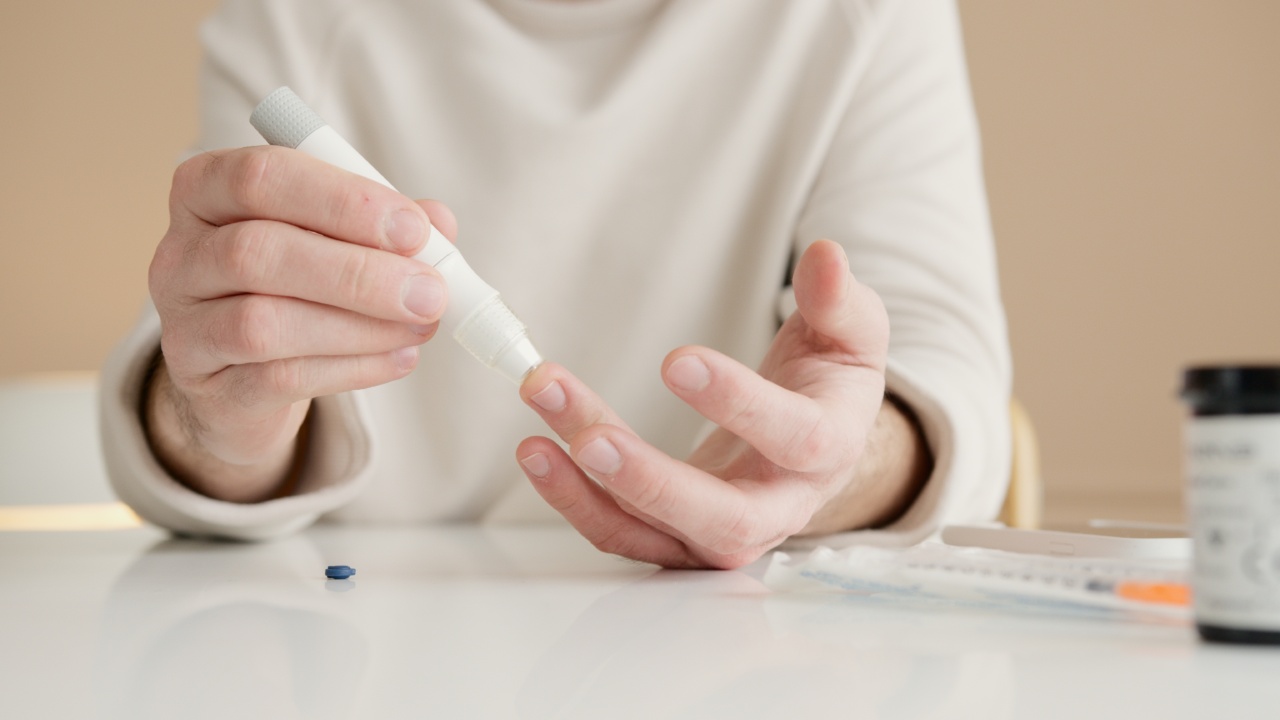For many people with diabetes, monitoring blood glucose levels is a part of daily life. This often involves painful finger pricks multiple times a day, leaving many people searching for alternatives.
In recent years, there has been an increase in the development of non-invasive glucose monitoring devices, revolutionizing the way people with diabetes manage their condition.
The Traditional Finger Prick Method
The traditional way to monitor glucose levels in people with diabetes involves pricking the finger with a lancet, then placing a drop of blood onto a test strip.
The strip is then inserted into a glucose meter, which reads and displays the blood glucose level on a screen. This process is typically done several times a day to help people with diabetes manage their blood sugar levels and prevent complications.
The Drawbacks of Traditional Finger Pricks
Despite the benefits of regular glucose monitoring, the traditional finger prick method has numerous downsides. The most obvious is the pain involved in pricking the finger.
Many people with diabetes find this painful and inconvenient, especially if they have to do it multiple times a day.
In addition to the discomfort associated with finger pricks, traditional glucose monitoring can also be time-consuming and require a lot of supplies.
People with diabetes must always carry their glucose meter, lancets, and test strips with them wherever they go. This can be a hassle and can make it difficult for people to manage their diabetes discreetly.
Lastly, the traditional method of monitoring glucose levels can be costly. Test strips, glucose meters, and lancets can add up over time, especially for people who have to test frequently throughout the day.
Some insurance plans do not always cover these supplies, leaving people with diabetes to cover the cost out of pocket.
The Rise of Non-Invasive Glucose Monitoring
Recognizing the drawbacks of traditional finger prick methods, many researchers and medical device companies have been developing non-invasive glucose monitoring devices.
These devices use various technologies to measure blood glucose levels without the need for a finger prick.
Non-Invasive Glucose Monitoring Technologies
There are currently several non-invasive glucose monitoring technologies available or in development:.
Continuous Glucose Monitoring (CGM)
A continuous glucose monitor is a device that measures glucose levels continuously throughout the day via a sensor inserted under the skin.
The sensor reads glucose levels in the interstitial fluid and sends the data to a monitor, which displays the results. The sensor can be worn for several days before being replaced. This method provides a constant view of glucose levels, without the need for finger pricks.
Implantable Sensors
Implantable sensors are similar to CGMs but are implanted under the skin and can remain in place longer. These sensors send glucose readings wirelessly to a monitor, eliminating the need for finger pricks.
Optical Coherence Tomography (OCT)
Optical coherence tomography (OCT) is an imaging technology that uses light waves to create 3D images. Researchers are exploring the use of OCT to measure glucose levels by shining light onto the skin and measuring the reflected light.
This technology is still in the early stages of development.
Breath Glucose Monitoring
Breath glucose monitoring uses a breathalyzer-type device to detect acetone levels in a person’s breath. Acetone levels have been shown to correlate with glucose levels in the bloodstream.
While still in the experimental stages, this technology has potential as a non-invasive and low-cost way to monitor glucose levels.
Benefits of Non-Invasive Glucose Monitoring
The benefits of non-invasive glucose monitoring are clear. People with diabetes no longer have to endure painful finger pricks several times a day. Instead, they can manage their blood sugar levels with ease and less discomfort.
Non-invasive glucose monitoring also eliminates the need for supplies like test strips and lancets, ultimately reducing the cost of managing diabetes.
Conclusion
Non-invasive glucose monitoring has the potential to revolutionize the way people with diabetes manage their condition. With continuous advancements in medical technology, diabetes management can become easier, less painful, and more discreet.
The availability of non-invasive glucose monitoring devices offers people with diabetes more freedom and flexibility in their daily lives.






























